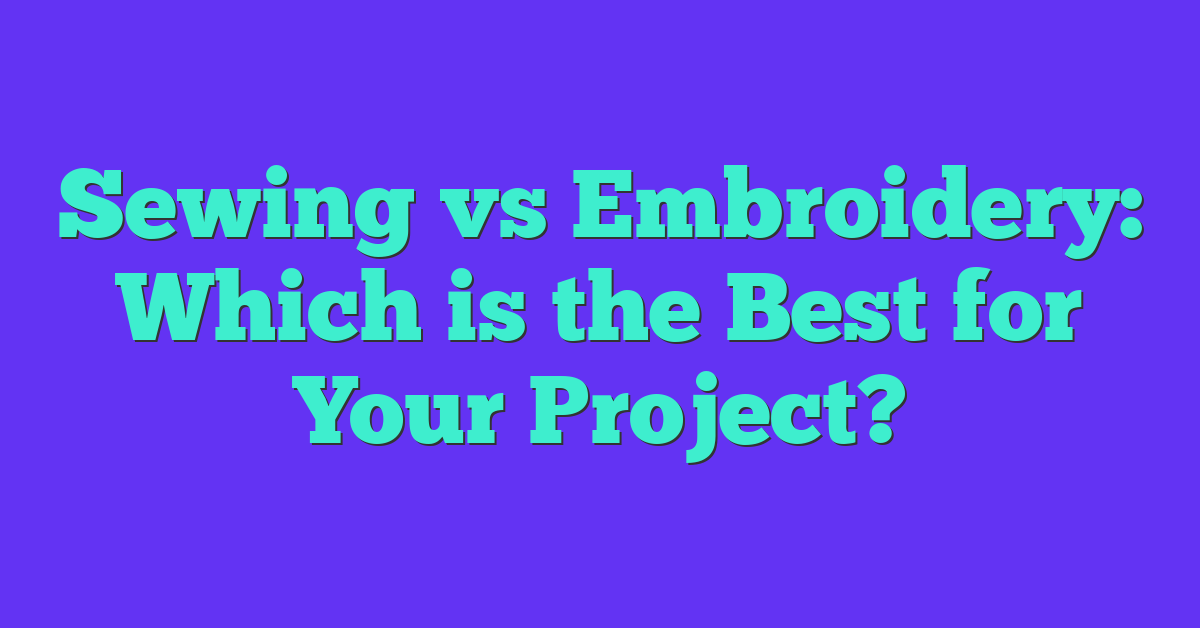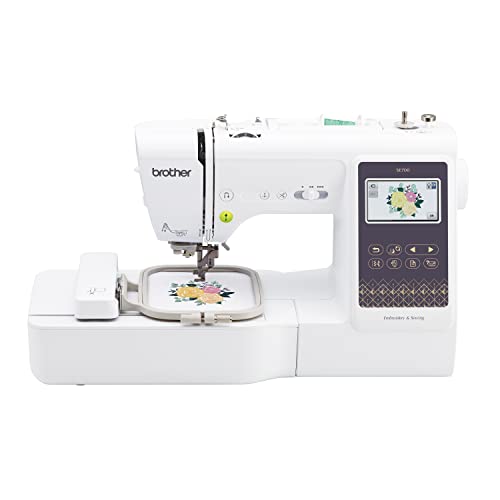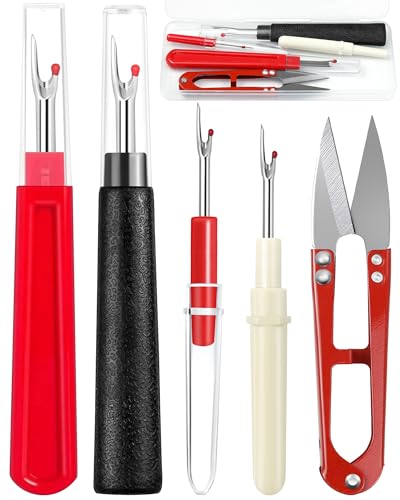Sewing and embroidery are two popular needlework techniques that have been around for centuries. They both involve the use of needles and thread, but they differ in terms of their purpose, techniques, and applications. While sewing is primarily used to join pieces of fabric together, embroidery involves decorating fabric with intricate designs using thread or yarn.
Understanding the differences between sewing and embroidery is essential for anyone interested in needlework. Sewing is a fundamental skill that can be used to create a wide range of projects, from clothing to home decor. Embroidery, on the other hand, is a more specialized technique that requires a higher level of skill and precision. It can be used to create beautiful and intricate designs on fabric, such as monograms, logos, and decorative patterns.
Key Takeaways
- Sewing and embroidery are two distinct needlework techniques that differ in terms of their purpose, techniques, and applications.
- Sewing is primarily used to join pieces of fabric together, while embroidery involves decorating fabric with intricate designs using thread or yarn.
- Both techniques require different types of machines, threads, needles, and accessories, and can be used to create a wide range of projects.
Understanding Sewing
Sewing is an act of joining two or more pieces of fabric together using a needle and thread. It is a functional process that is used to create clothing, household items, and other projects. Sewing can be done by hand or by machine, depending on the purpose and the type of project.
When it comes to sewing, the type of needle and thread used is crucial. Needles come in different sizes and shapes, and they are designed for specific fabrics and projects. For instance, a needle used for sewing denim fabric is different from the one used for sewing silk. The thread used for sewing should also be durable and strong enough to withstand the stress and strain of regular use.
Sewing machines are also used to make sewing faster and more efficient. There are different types of sewing machines, ranging from regular sewing machines to heavy-duty machines designed for industrial use. A regular sewing machine is suitable for most household items and garments, while an industrial machine is used for heavy-duty projects such as canvas and leather.
One of the primary purposes of sewing is to mend or alter clothing and household items. For instance, a button that has fallen off a shirt can be sewn back on using a needle and thread. Hems can also be sewn on pants and skirts to prevent fraying. Seams can be sewn to join two pieces of fabric together, making them more durable.
Sewing is also used in quilting, where fabric pieces are sewn together to create a quilt. The straight stitch is the most commonly used stitch in quilting, and it is used to join fabric pieces together. Sewing tools such as rotary cutters, rulers, and cutting mats are used to cut and measure fabric accurately.
In terms of cost, sewing can be an affordable way to create clothing and household items. Sewing machines can range from a few hundred dollars to thousands of dollars, depending on the features and capabilities. However, a basic sewing machine can be purchased for a reasonable price, and it can be used to create a wide range of projects.
Overall, sewing is a useful skill that can be used to create a wide range of projects and applications. Whether you are sewing by hand or using a machine, the focus should be on creating durable and functional items that can withstand regular use.
Exploring Embroidery
Embroidery is an art form that involves decorating fabric with needle and thread. It is a versatile and creative activity that allows for personalization and self-expression. As someone who enjoys embroidery, I love the act of stitching and creating unique designs.
The tools needed for embroidery are simple: a needle, thread, and fabric. The needle and thread used will depend on the type of fabric and the desired effect. Embroidery thread comes in a variety of colors, textures, and sheens, making it easy to find the perfect match for any project.
Embroidery can be done by hand or with the help of an embroidery machine. Hand embroidery involves stitching the design by hand using a variety of techniques, such as the satin stitch or the French knot. Machine embroidery, on the other hand, uses an embroidery machine to create intricate designs quickly and easily.
One of the benefits of embroidery is its versatility. It can be used to decorate a variety of items, such as bags, quilts, or clothing. Embroidery can also be used to create monograms or add decorative stitches to a piece of fabric.
Embroidery is an art form that requires patience and skill. It takes time to create intricate designs, but the end result is worth the effort. As someone who enjoys embroidery, I find it to be a relaxing and rewarding activity.
In the market for embroidery supplies, there are many brands and options to choose from. Brother is a popular brand for embroidery machines, while rayon and polyester are popular thread choices. The size and shape of the embroidery hoop used can also affect the final result.
Overall, embroidery is a valuable skill to have. It allows for personalization and adds value to any item. Whether done by hand or with the help of a machine, embroidery is a fun and creative way to add embellishments and decoration to fabric.
Sewing vs Embroidery
As a sewing and embroidery enthusiast, I often get asked about the differences between the two crafts. While both involve needle and thread, they serve different purposes and require different skill sets.
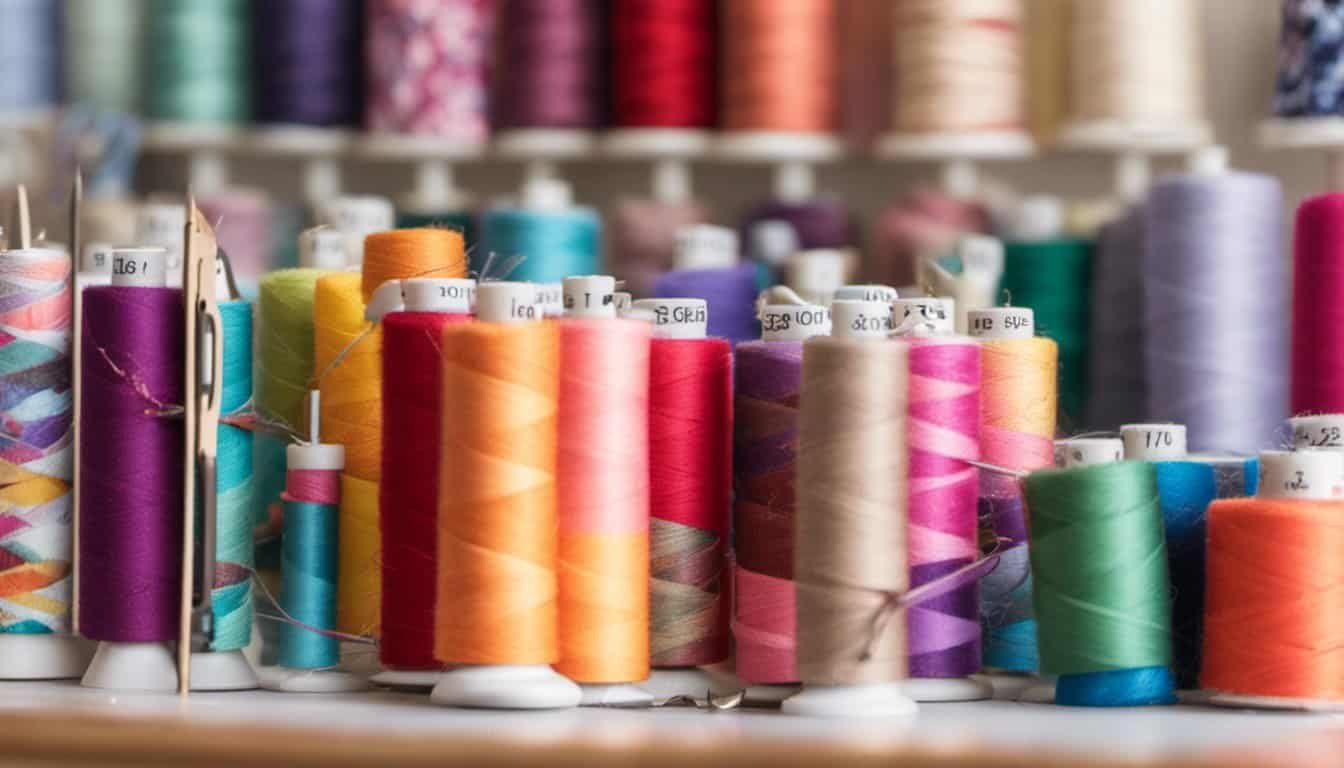
Purpose and Functionality
Sewing primarily involves joining fabrics together using various stitches, whereas embroidery is the art of decorating fabric by stitching intricate designs or patterns. Sewing is functional and necessary for constructing clothing, bags, blankets, and much more. Embroidery, on the other hand, is purely decorative and allows for customization and individualization.
Machines and Accessories
Both sewing and embroidery can be done by hand or with the help of machines. However, embroidery machines are specifically designed to create intricate designs and patterns, while sewing machines are designed for construction and functionality. Embroidery machines also require specialized accessories such as hoops and stabilizers to hold the fabric in place while stitching.
« Bernina Sewing Machine Reviews: Find Your Perfect Machine Today!
Are Sewing Needles Magnetic? Discover the Truth Here! »
Needle and Thread
Both crafts use needles and thread, but the weight and type of thread used differ. Sewing typically uses cotton or silk thread of varying weights, while embroidery uses thicker and more colorful threads made specifically for decorative stitching. Embroidery needles are also sharper and have larger eyes to accommodate the thicker thread.
Skill Level and Precision
Sewing is generally considered easier to learn and requires less precision than embroidery. Embroidery requires a higher level of skill and precision to create intricate designs and patterns. However, both crafts require practice and patience to master.
Versatility and Business
Sewing is a versatile craft that can be used for both functional and decorative purposes. It is also a popular business venture, with many people starting their own sewing businesses. Embroidery, while less versatile, can also be a profitable business venture for those with the necessary skills and equipment.
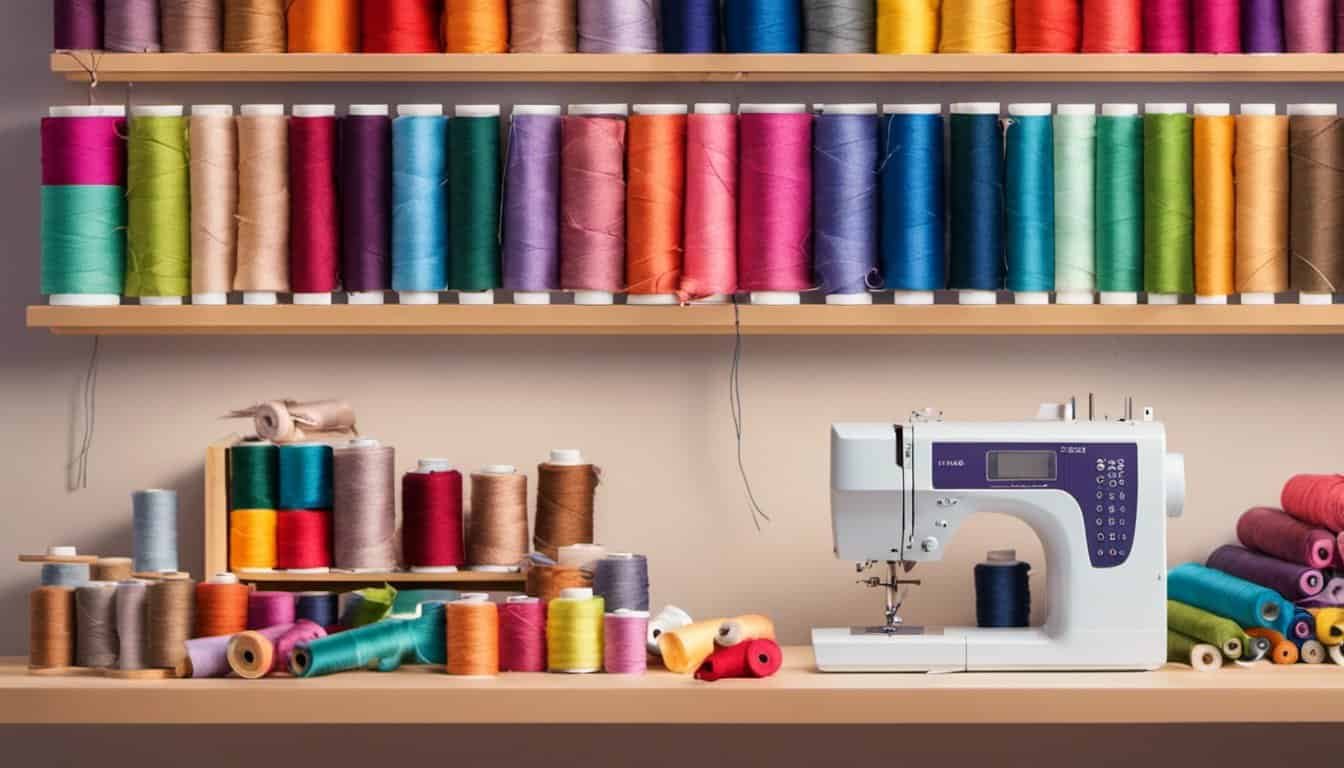
In conclusion, sewing and embroidery are both wonderful crafts that offer unique benefits and challenges. Whether you prefer the functionality of sewing or the decorative nature of embroidery, both crafts require skill, patience, and a love for needle and thread.
Machine Types and Brands
When it comes to sewing and embroidery, there are different types of machines available on the market. I have found that it is important to choose the right machine for your specific needs and preferences. Here are some of the most common types of machines and brands that I have come across:
Sewing Machines
A regular sewing machine is designed to join pieces of fabric together. It can be used for tailoring or making articles of clothing. Some popular brands of sewing machines include Singer, Janome, and Brother.
Embroidery Machines
An embroidery machine is used for artistic embroidery, a decorative art form that involves sewing intricate designs on a piece of fabric. It is important to note that embroidery machines can be more expensive than regular sewing machines. Some popular brands of embroidery machines include Brother, Janome, and Singer.
Combination Machines
Combination machines can both sew and embroider. This means that you can use them for both regular sewing projects and embroidery projects. Combination machines can be a good investment if you want to do both types of projects and don’t want to buy separate machines. Some popular brands of combination machines include Brother, Janome, and Singer.
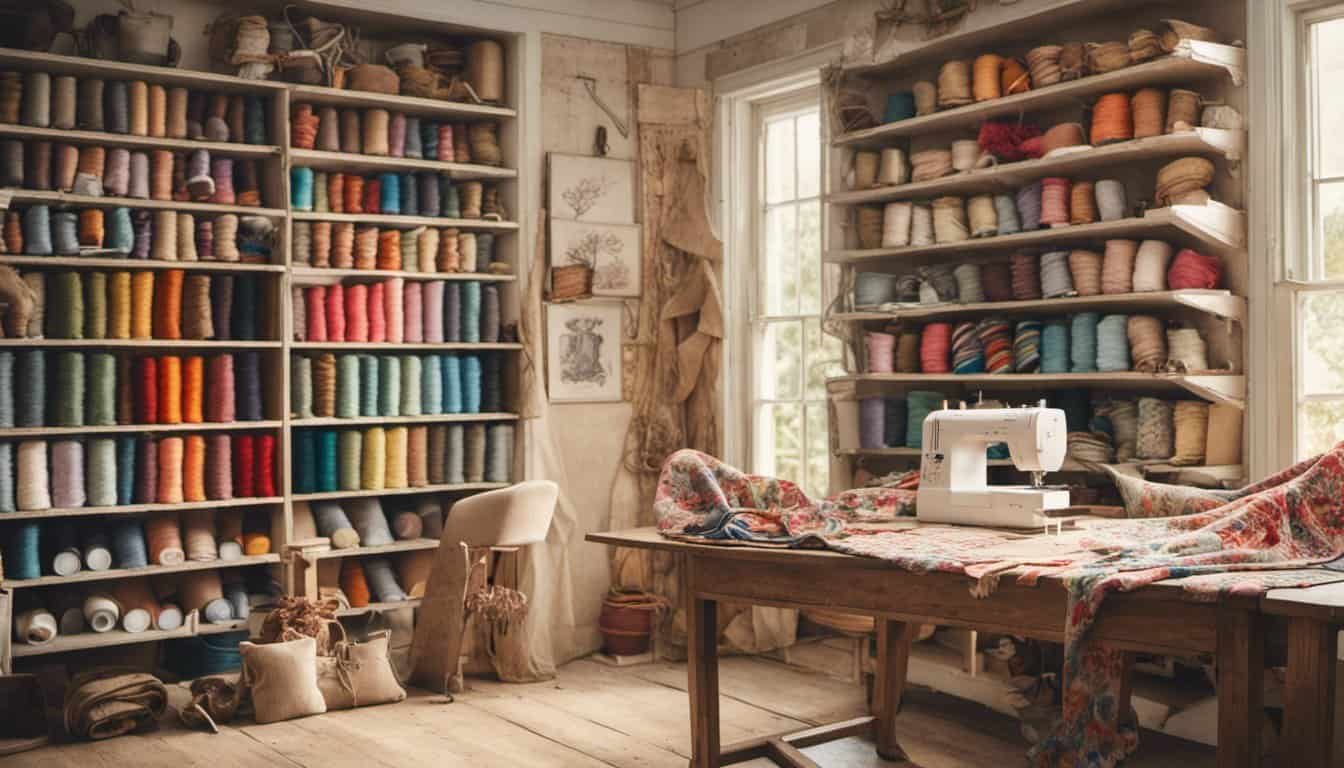
Brands
When it comes to choosing a brand of sewing or embroidery machine, it can be helpful to do some research to find a brand that fits your needs and preferences. Some popular brands include Brother, Janome, and Singer. Brother is known for its affordable and user-friendly machines. Janome is known for its high-quality machines that are designed to last. Singer is known for its long history of producing reliable sewing machines.
In conclusion, there are many different types of sewing and embroidery machines available on the market, and it is important to choose the right one for your specific needs and preferences. Whether you are looking for a regular sewing machine, an embroidery machine, or a combination machine, there are many brands to choose from. By doing some research and considering your options, you can find a machine that will help you create beautiful and unique projects.
Threads, Needles, and Accessories
When it comes to sewing and embroidery, it’s important to have the right tools and materials to achieve the best results. Here are some of the essential items you’ll need:
Thread
Thread is the backbone of any sewing or embroidery project. There are many different types of thread available, including cotton, silk, rayon, polyester, and even yarn. Each type of thread has its own unique properties, such as strength, sheen, and stretchiness.
For sewing, you’ll want to use a thread that is appropriate for your fabric. A thicker thread may be better for heavy fabrics, while a finer thread may be better for delicate fabrics. Embroidery thread, on the other hand, is specifically designed for use in embroidery machines and is often made of rayon or polyester.
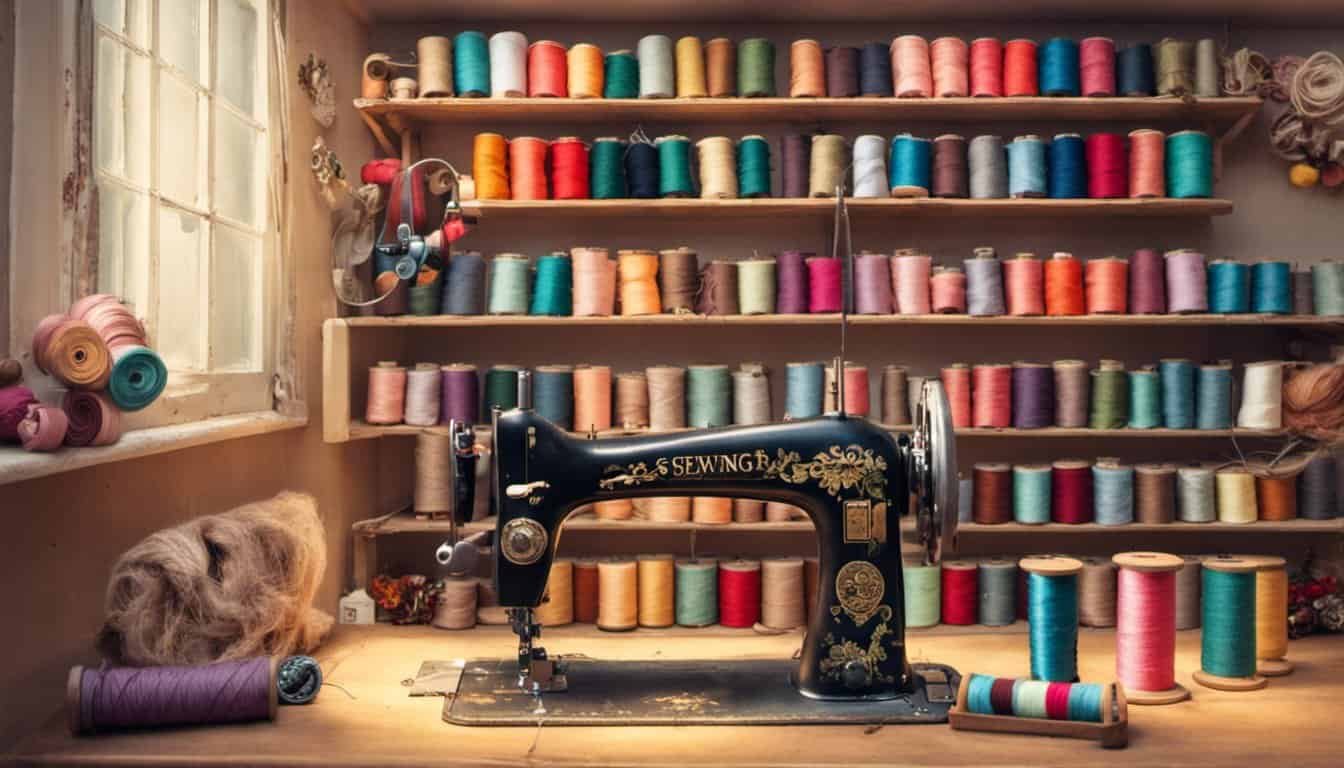
Needles
Choosing the right needle is just as important as choosing the right thread. Sewing needles and embroidery needles are not interchangeable, so be sure to use the correct type for your project.
Sewing needles come in a variety of sizes and styles, including universal, ballpoint, and denim needles. Embroidery needles are typically larger and have a larger eye to accommodate thicker embroidery thread.
Accessories
There are many other accessories that can help make your sewing or embroidery project easier and more successful. Some examples include:
- Scissors: A good pair of scissors is essential for cutting fabric and thread.
- Pins: Pins are used to hold fabric in place while sewing.
- Seam ripper: Mistakes happen, and a seam ripper can help you undo stitches without damaging your fabric.
- Bobbins: Bobbins hold the thread in your sewing machine and need to be filled with the appropriate thread for your project.
By having the right tools and materials, you’ll be well on your way to creating beautiful sewing and embroidery projects.
Techniques and Stitches
When it comes to sewing and embroidery, there are a variety of techniques and stitches that can be used to create beautiful designs and patterns. As someone who has experience with both, I can say that each technique requires its own set of skills and tools.

One of the most basic stitches used in both sewing and embroidery is the straight stitch. This stitch is used to create a straight line and is often used in sewing to join two pieces of fabric together. In embroidery, the straight stitch can be used to create outlines and details in a design.
Another popular stitch used in embroidery is the cross-stitch. This stitch is created by making two diagonal stitches that cross over each other to form an X. Cross-stitch is often used to create intricate designs and patterns, and can be used in a variety of ways to add texture and depth to a piece.
In addition to these basic stitches, there are also a variety of decorative stitches that can be used in embroidery. One popular decorative stitch is the satin stitch, which is used to fill in shapes and create a smooth, polished look. French knots are another decorative stitch that can be used to add texture and dimension to a piece.
When it comes to techniques, there are a variety of different approaches that can be used in both sewing and embroidery. In sewing, techniques such as gathering, pleating, and hemming are used to create different effects and finishes. In embroidery, techniques such as appliqué and stumpwork can be used to create three-dimensional designs and patterns.
Overall, both sewing and embroidery require a combination of skill and creativity to create beautiful designs and patterns. Whether you prefer the precision of sewing or the intricacy of embroidery, there are a variety of techniques and stitches to explore and experiment with.

Projects and Applications
When it comes to projects and applications, sewing and embroidery have some overlap but also some distinct differences.
Sewing is great for creating functional items such as clothing, bags, and household items. It’s perfect for making garments like jeans or creating custom fitted clothing. Sewing is also great for creating household items like curtains, tablecloths, and pillowcases.
Embroidery, on the other hand, is perfect for adding a decorative touch to clothing, bags, and household items. It’s great for adding a personal touch to a gift or creating unique pieces of art. Embroidery can be done on many materials such as canvas, denim, and even quilts.
One of my favorite applications for embroidery is self-expression. Embroidery allows you to express your creativity and personality through your work. Whether it’s adding a simple monogram to a shirt or creating an intricate design on a bag, embroidery is a great way to show off your individuality.
In summary, sewing and embroidery have their own unique strengths when it comes to projects and applications. Sewing is great for creating functional items while embroidery is perfect for adding a decorative touch and expressing your creativity.

Maintenance and Care
As someone who enjoys both sewing and embroidery, I’ve learned that proper maintenance and care are essential for getting the most out of my machines. Here are some tips to keep your equipment in good condition:
Regular Cleaning
One of the most important things you can do to keep your sewing and embroidery machines in good working order is to clean them regularly. Dust, lint, and other debris can build up over time and cause problems with the machine’s performance.
I recommend cleaning the machines after every use, or at least once a week if you use them frequently. Use a soft brush to remove any debris from the machine’s exterior and interior. You can also use a vacuum cleaner with a small attachment to remove any dust or lint that may be stuck in hard-to-reach areas.
Oil and Lubrication
Another important aspect of machine maintenance is oiling and lubrication. This helps to keep the moving parts of the machine running smoothly and prevents wear and tear over time.
Be sure to follow the manufacturer’s instructions for oiling and lubricating your machine. Over-oiling can cause problems, so use only the recommended amount.
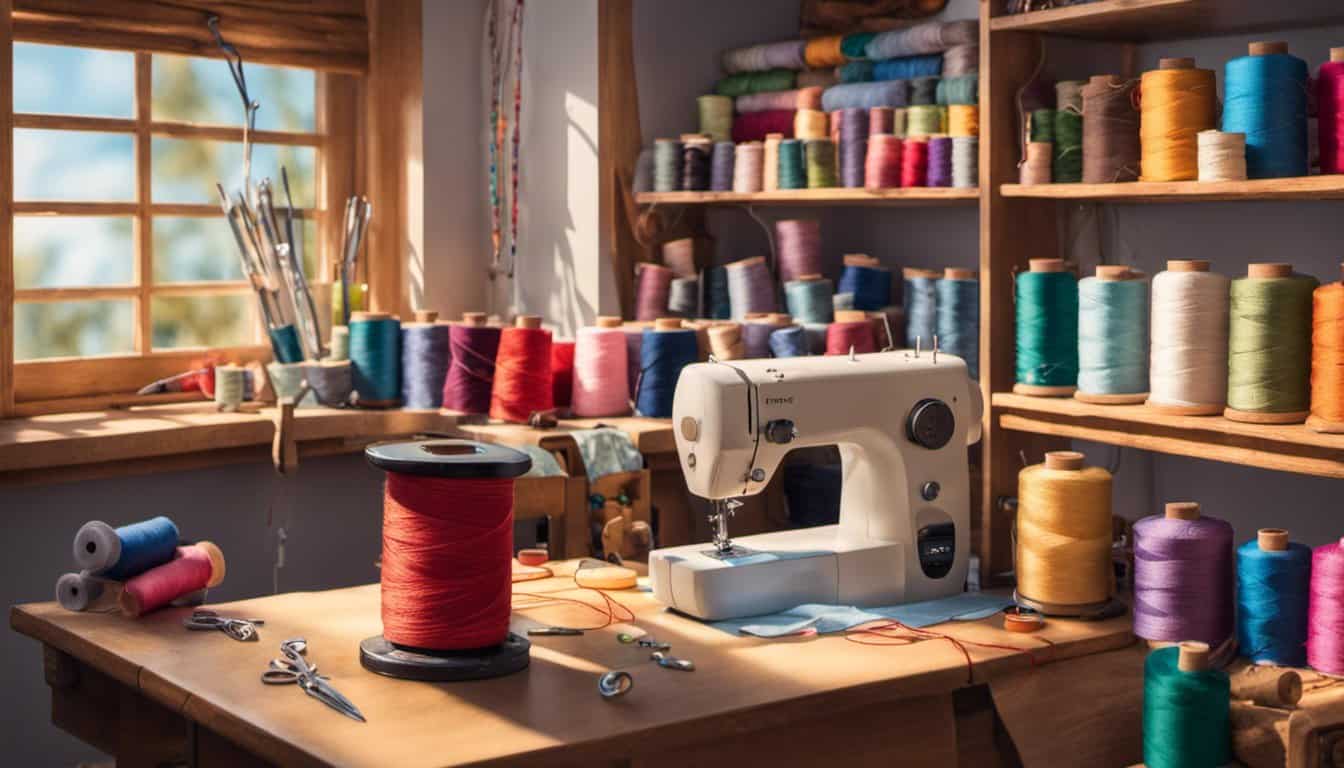
Repairs and Service
Even with regular maintenance, sewing and embroidery machines can sometimes break down or develop problems. If you notice any issues with your machine, such as skipping stitches or strange noises, it may be time to take it in for repairs or servicing.
It’s a good idea to have your machine serviced by a professional at least once a year, especially if you use it frequently. This can help to catch any potential problems before they become major issues.
Durability and Weight
When choosing a sewing or embroidery machine, consider the durability and weight of the machine. A heavier machine may be more durable and able to handle thicker fabrics and materials, but it may also be more difficult to move around.
Think about your specific needs and preferences when choosing a machine. If you plan to take your machine to classes or events, a lighter weight machine may be more practical.
In conclusion, proper maintenance and care are essential for getting the most out of your sewing and embroidery machines. Regular cleaning, oiling and lubrication, and repairs and service can help keep your machines in good working order. When choosing a machine, consider the durability and weight to find the best fit for your needs.

Conclusion
After comparing sewing and embroidery, it’s clear that these two techniques have their own unique features and purposes. Sewing is primarily used for joining pieces of fabric together to create a structure, while embroidery is used to enhance the fabric with intricate designs using specialized machines and threads.
When it comes to value, both sewing and embroidery have their own advantages. Sewing is a practical skill that can save you money by allowing you to create your own clothing, bags, blankets, and more. Embroidery, on the other hand, is a great way to add a personal touch to your clothing or home decor and can even increase the value of a garment.
In terms of difficulty, both sewing and embroidery require practice and skill to master. However, with modern technology, embroidery has become more accessible to beginners with the use of computerized embroidery machines.
Overall, whether you prefer sewing or embroidery depends on your personal preferences and needs. Both techniques have their own benefits and can be enjoyable hobbies or practical skills to have. So, why not try both and see which one you prefer?
Frequently Asked Questions
What is the difference between sewing and embroidery?
Sewing and embroidery are two different textile techniques. Sewing involves joining two pieces of fabric together using a needle and thread. Embroidery, on the other hand, is the art of decorating fabric with needles and thread. While both crafts require a needle and thread, they are used in different ways.

Which is better for beginners: sewing or embroidery?
Both sewing and embroidery have their learning curves, but sewing is generally considered to be easier for beginners. Sewing involves simple stitches and techniques that are easy to master. Embroidery, on the other hand, requires more skill and patience, as it involves intricate designs and stitches.
Can you use a sewing machine for embroidery?
Yes, you can use a sewing machine for embroidery, but you will need an embroidery attachment or a specialized embroidery machine. A sewing machine is designed to join pieces of fabric together, while an embroidery machine is designed to sew intricate designs on a piece of fabric.
What are some good computerized embroidery machines?
Some good computerized embroidery machines include the Brother SE1900, the Janome Memory Craft 400E, and the Singer Quantum Stylist EM200. These machines offer a range of features and capabilities that make them ideal for both beginners and advanced users.
Is embroidery considered a form of tailoring?
Embroidery is not considered a form of tailoring, but it is often used to embellish tailored garments. Tailoring involves the process of making and altering clothing to fit the wearer’s body, while embroidery involves decorating fabric with needle and thread.
What is the best sewing and embroidery machine?
The best sewing and embroidery machine will depend on your needs and preferences. Some popular options include the Brother SE600, the Janome Horizon Memory Craft 9850, and the Singer Futura XL-580. These machines offer a range of features and capabilities that make them ideal for both sewing and embroidery projects.

